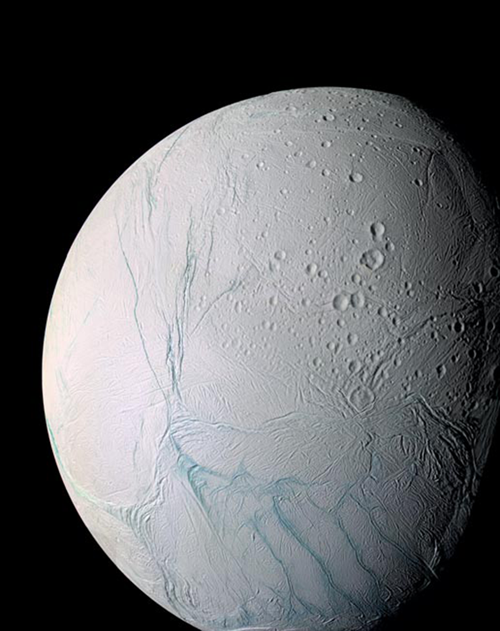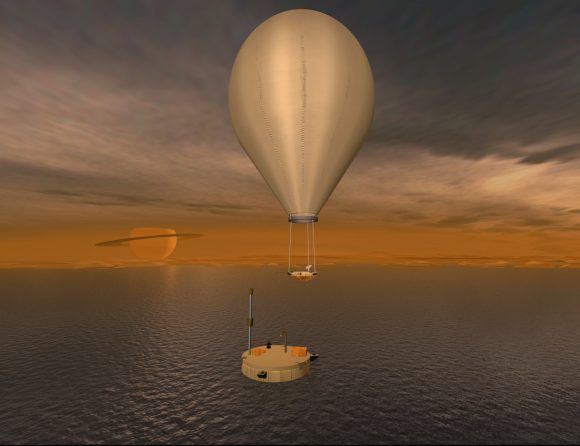

We predict that the tiger-stripe regions with highest relative temperatures will be the lower-latitude branch of Damascus, Cairo around 60 degrees W longitude and Alexandria around 150 degrees W longitude. Active eruptions from the south polar region of Saturn’s 500-km-diameter moon Enceladus are concentrated along a series of lineaments known as the ‘tiger stripes’ 1, 2, thought to. These fissures aren’t quite like anything else in the solar system. Slashed across Enceladus’ south pole are four straight, parallel fissures or tiger stripes from which water erupts. Just 300 miles across, the moon is thought to have an outer shell of ice covering a global ocean 20 miles deep, encasing a rocky core. Rudolph, Hemingway and Manga used numerical modeling to understand the forces acting on Enceladus’ icy shell. Peak eruptive output anomalously lags peak tidal ex-tension (by 5.1 ± 0. Saturn’s tiny, frozen moon Enceladus is a strange place. The tidal displacements required imply a Love number of h2 > 0.01, suggesting that the ice shell is decoupled from the silicate interior by a subsurface ocean. of Enceladus’ eccentric orbit about Saturn (the diurnal tidal period). The ice shell thickness needed to produce the observed heat flux is at least 5 km. Vapour produced by this heating may escape as plumes through cracks reopened by the tidal stresses. Here we show that the most likely explanation for the heat and vapour production is shear heating by tidally driven lateral (strike-slip) fault motion with displacement of approximately 0.5 m over a tidal period. Neither model addresses how delivery of internal heat to the near-surface is sustained. The Cassini flyby of 14 July 2005 revealed plumes of water vapour and ice associated with the 'tiger stripe' features on the surface of Saturn's icy moon Enceladus. The plume characteristics and local high heat flux have been ascribed either to the presence of liquid water within a few tens of metres of the surface, or the decomposition of clathrates. The NASA Astrobiology Program provides resources for Habitable Worlds and other Research and Analysis programs within the NASA Science Mission Directorate ( SMD) that solicit proposals relevant to astrobiology research.Enceladus, a small icy satellite of Saturn, has active plumes jetting from localized fractures ('tiger stripes') within an area of high heat flux near the south pole. The work was supported through NASA’s Habitable Worlds Program. The study, “Ocean tidal heating in icy satellites with solid shells” was published in Icarus. The results could inform future missions, such as Europa Clipper.

The findings also present a number of insights into how tidal heating might operate on icy moons, with implications on the potential thickness of icy shells and depth of subsurface oceans on moons like Enceladus and Europa. Cassini Imaging Team/SSI/JPL/ESA/NASA The. This is because Enceladus is expected to have a more rigid ice shell due to its smaller size. Published ApEnceladus 'Tiger stripes, the sources of ice plumes, are visible in this image taken by the Cassini spacecraft in 2009. The findings indicate that this effect would be greater on Enceladus than on Europa.

The study includes a discussion of how an overlying shell on icy moons might dampen ocean tides and cause a reduction in tidal heating. Understanding how tidal heating works can help astrobiologists identify worlds that support subsurface oceans and determine whether or not these oceans might be habitable for life as we know it. Under the right conditions, tidal heating is thought to be a long-term source of energy on some icy worlds that can help to create and maintain liquid subsurface oceans.

A recent study supported in part by the NASA Astrobiology Program discusses the dynamics of tidal heating on worlds with thin subsurface oceans that are covered by ice shells of varying thickness.


 0 kommentar(er)
0 kommentar(er)
